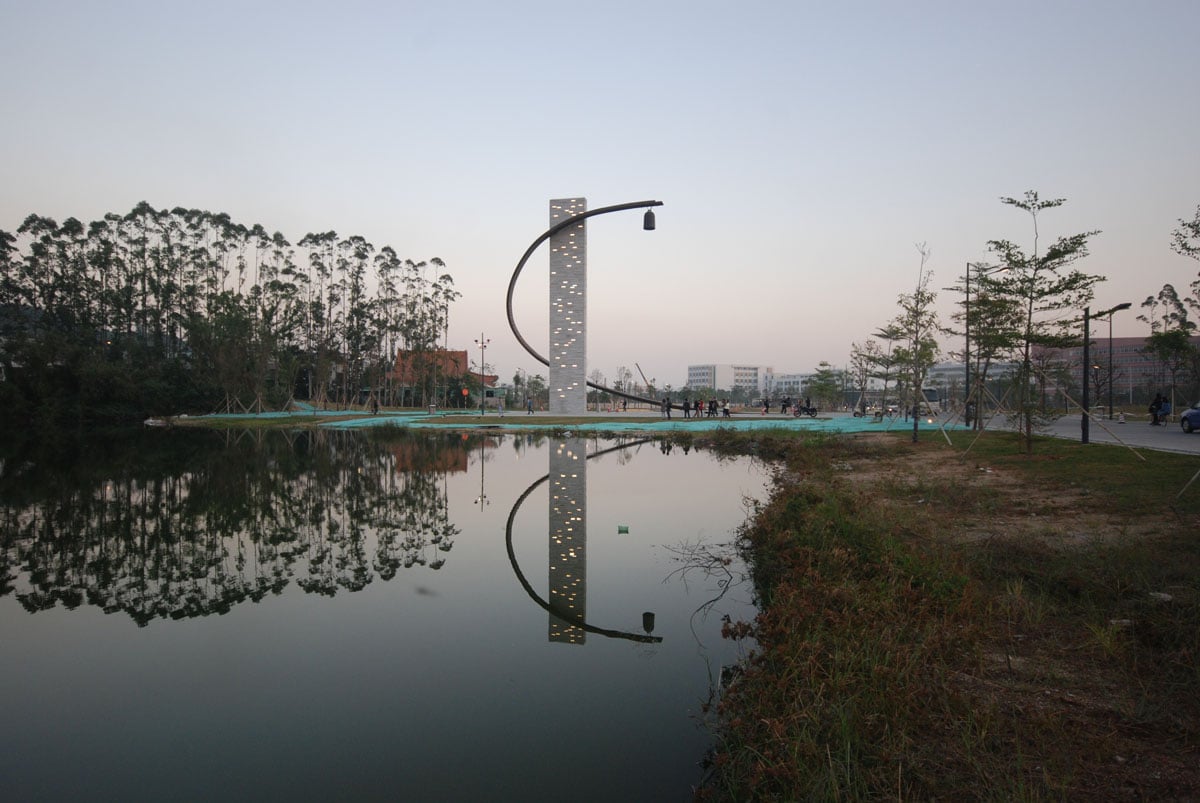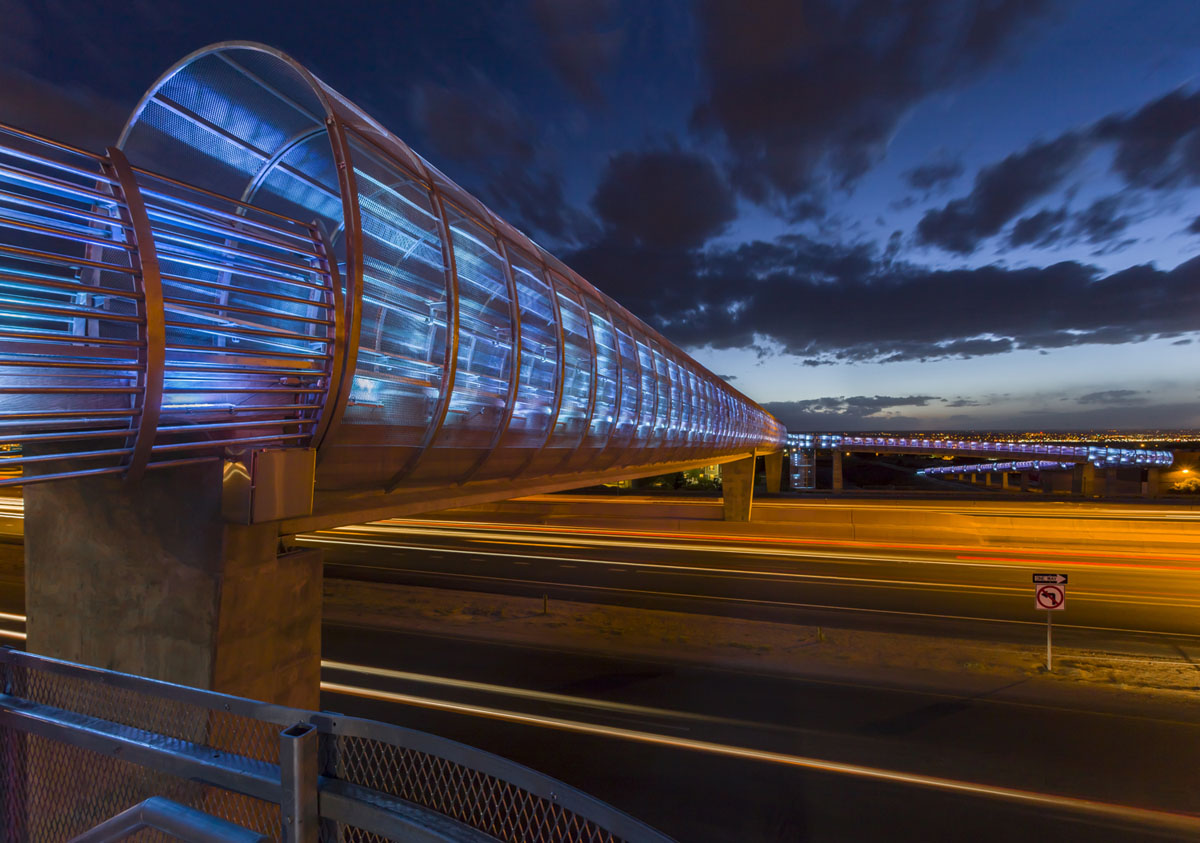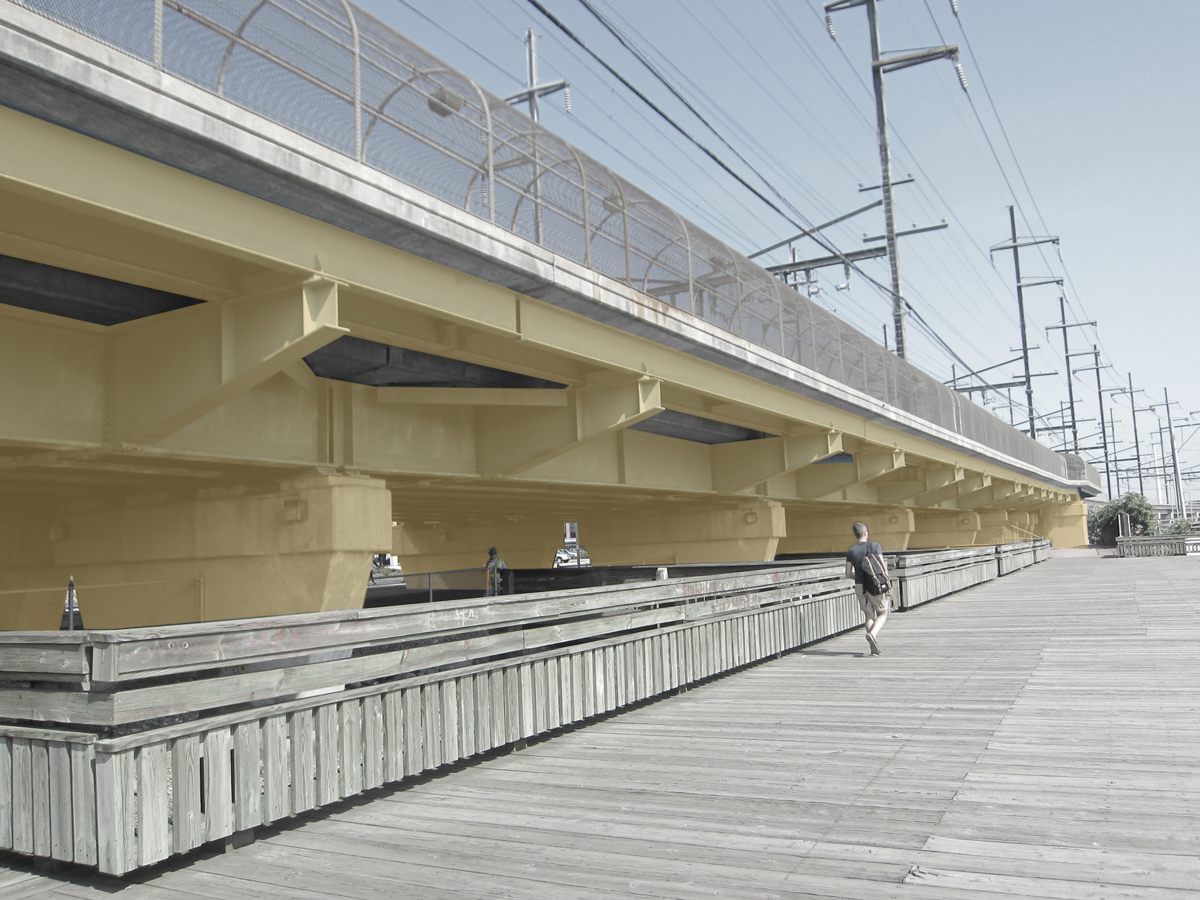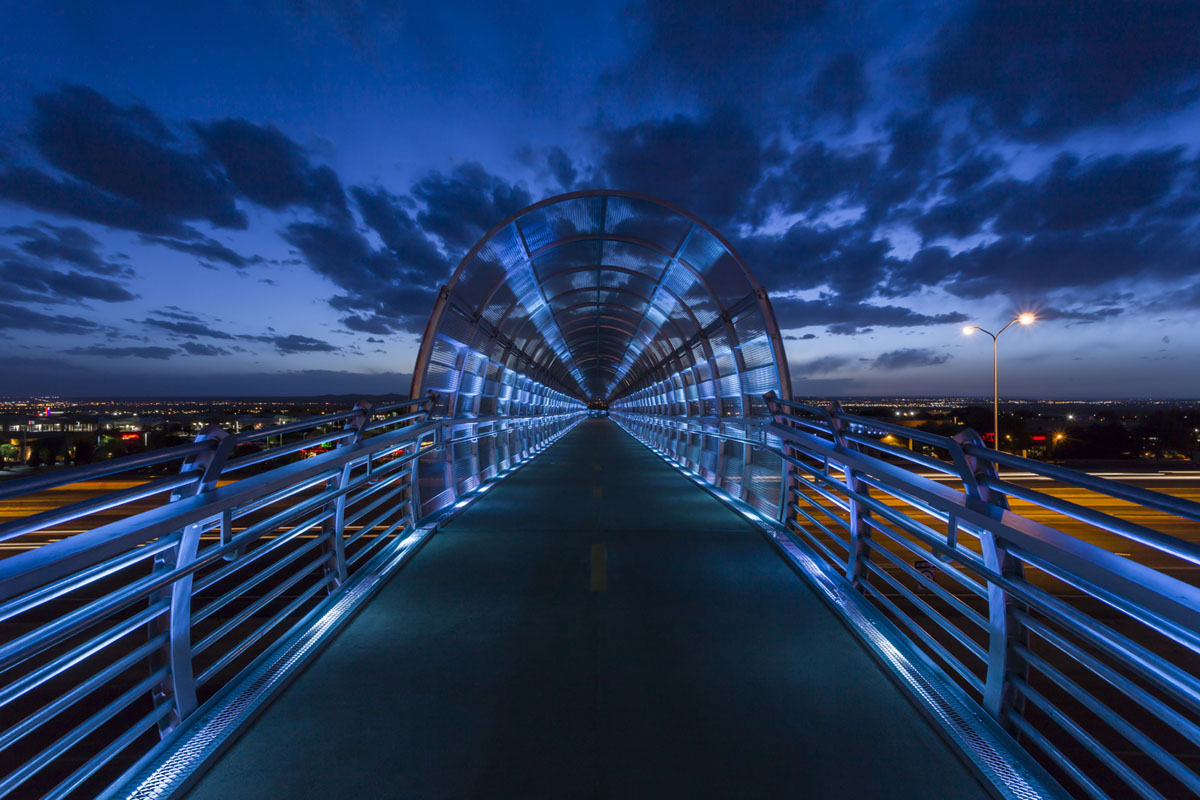
June 24, 2014
Seeing in the Dark: Linnaea Tillett’s Subtle, High-Impact Lighting Designs
When it comes to lighting, designer Linnaea Tillett often finds that less is more.

Shantou University Ceremonial Bell Tower and Plaza, Shantou, China, 2013
Captured at twilight hour, architect Maya Lin’s bell tower glows with dozens of lightboxes that speak to the pixels of a digital age as well as the Chinese tradition of candlelit lanterns.
Courtesy Maya Lin Studio
“Wait. Wait. Just wait.”
Such are the words that lighting designer Linnaea Tillett finds herself repeating to her clients time and again. Attuned to the intrinsic connection between light and time, she knows that her work reveals itself slowly, in increments. But if her call for pause feels anachronistic at a time when the pace of modern life seems ever accelerated, that’s not the only thing that appears incongruous. As a scholar of illumination, Tillett is unusually engaged with nuances of darkness, aware that human perception is a matter not just of seeing light, but of discerning shadow.
These contradictions have distinguished her work in residential, commercial, and landscape lighting for the last 31 years. Projects executed by her Brooklyn firm, Tillett Lighting Design Inc., range from the High Line, the Franklin D. Roosevelt Four Freedoms Park, and the Battery Bosque in New York, to Shantou University in China and the Icepool in Finland, a collaboration with Lebbeus Woods and Kiki Smith. Throughout, her approach reflects the conviction stated by Junichiro Tanizaki in his classic inquiry into varying cultural ideas of light, In Praise of Shadows: Beauty, he wrote, is found “not in the thing itself, but in the patterns of shadows, the light, and the darkness, the one thing against another creates.”
Which is to say, Tillett’s work is informed by the paradox that seeing more is often a matter of less light. Consider, for example, the fecund landscape of the Menil Collection campus in Houston, distinguished by its great, leafy trees that dapple the gardens below—and its wash of excessive security lighting. Aware of “the philosophical idea that too much light hinders perception,” Tillett specified subtle fixtures interspersed at doorways and entrances and intermittent light on pathways.

Tillett’s design for an illuminated bikepath in Aluquerque
Courtesy Kirk Gittings
For a bicycle and pedestrian bridge over a highway in Albuquerque, she used 450 LED lights to evoke a blue stream of river and sky that takes its shimmer from the galvanized metal mesh of the structure. And for a public park in Syracuse, New York, she programmed 50-plus tiny chips on benches and fountains to blink in seemingly random sequences like year-round fireflies, “reflective, magical animate lights that appear and disappear—delicate, half-light, that are part of our mythology.”

Linnaea Tillett, lighting designer and environmental psychologist
Courtesy Mike Morgan
Tillett’s lineage is one of design royalty. Her parents were D.D. and Leslie Tillett, celebrated textile designers whose bright patterns and designs in the fifties were favored by Jacqueline Kennedy. As a child, Linnaea was accustomed to seeing her parents with their clients, scrutinizing fabrics in different lights. The experience familiarized her with the constant transaction between light and the material world. Each, she found, gives character to the other. That such an exchange might be the basis of a career was something to which she gave little thought, and her undergraduate degree from the University College London was in philosophy. But in the mid-seventies, her sister-in-law—a costume designer—entreated her to help with a theater production. “We had some old tin cans with lenses, lots of wire, and a good script,” Tillett recalls. Discovering the manner in which lighting could support the emotional content of the play, she deferred her plans for graduate school.
When she established her own lighting practice for private homes, museums, and galleries, conversations with her private clients alerted Tillett to the difficulties in speaking about light. “People would say, ‘I hate fluorescents,’ or ‘I want this place bright.’ Maybe they had grown up with Depression-era parents who were always turning out the lights. But there was always a lot of raw emotion. And I was trying to read them as people.” This eventually motivated her to enroll in the doctorate program in environmental psychology at City University of New York.
As part of her thesis, she worked in a low-income community in East New York, Brooklyn, where, she recalls, illumination was often used as an accessory to authority. This was during the war on crime, and “redlined” high-crime areas were bathed in blinding floodlights. The belief that “having light is like having the police” worked to the benefit of Con Edison and lighting manufacturers, she points out. The doctorate program required that she get 72 credits in psychology and, as she says, “I was always thinking about light. So I got a PhD in how to communicate about light.”

Waterfront Illumination, Connecticut, In progress
Instead of adding spotlights to this dimly lit urban waterfront, Tillett’s firm proposed coating the surfaces of structures with a bronze reflective paint from Sheffield, to amplify the light that already exists.
Above and below courtesy Tillett Lighting Design
Everything, she says now, was shaped by that experience, and the knowledge that lighting conveys an emotional texture. Pure darkness exists only in the imagination. And sunlight is not just about illumination, but a sensation. “It has warmth, it moves, it plays, you feel it on your skin. It is not predictable. It’s a more dimensional experience, not just about seeing.
“You try to use very little,” Tillett says of her work now. “You ask questions of sensibilities. You ask how you support human development.” Certainly she has done that in a current project for an urban waterfront in Connecticut, which includes a highway, train station, and public esplanade. While city planners believed that the dusky area needed more light and more color, Tillett rarely approaches a project assuming that more lighting is what is needed. “It could be color or signage,” she says. “And sometimes I can do more for you if we turn things off. Sometimes it is about suppression. You can see too much. Or there may be too much light in one area, not enough in others.”

In this case, standard waterfront industrial structures included the massive concrete pillars supporting I-95, huge boats coming in, container towers, and an electrical tower. Tillett proposed adding uplighting beneath the underpass for the train tracks, but elsewhere relies largely on the use of a reflective paint with a pale coppery glow. It was applied to the underside of I-95, to the stairways, and on the surfaces of underpasses. It shines in the sunlight, she says, and at night it will pick up the glimmer from passing cars, the shine from existing lighting, the shimmering reflections on the water. “Celebrate what you have,” she says. “Use the least amount of materials. Make it legible, vibrant, exciting.”
What is happening here is also an example of what she calls “glow”—that social experience of light that occurs when people take in one another’s presence; when luminescence is emotionally sustaining and fosters community, perhaps even offering enchantment. To convey this point to her students at Parsons the New School for Design (where she taught for 20 years), she would sometimes take them at sundown to the beds of impatiens planted on Park Avenue’s median strip. “There are different kinds of twilight,” she says. “And as the sun sets, our perceptual system shifts in how we see color. Some colors intensify at dusk, others recede. The reds and yellows fade first, then the greens, lavenders, and finally the blues.”

Bear Canyon Bridge, Albuquerque, New Mexico, 2013
As bikers and pedestrians move through the bridge, the hue of the light shifts, not due to color-changing LEDs, but because of dichroic lenses, which filter out certain wavelengths of light from the fixtures.
Courtesy Kirk Gittings
Tillett works with the conviction that we are living in a technologically transformative time no less momentous than the advent of gas and electric illumination, which, she says, “changed everything—materials, clothing, the time we work.” The technology of LEDs—compact, energy-efficient, cool to the touch, and capable of a wide range of color—allows us to carry light and recharge it. How does this open things up, she asks? “We have to think about it this way—otherwise it is just about tricks, entertainment. We have to ask: How is this salient to human life? It is profound. It is not just some new engineering tool.”
Already, she says, the light on our tablets and phones allows us to reconsider light sources. When things—such as books, cameras, phones—become luminous, it challenges our ideas of what is lit and what is not. But Tillett suggests we need to know more about the brightness of devices. If you are reading at night in bed, the blue light of your device might trigger your circadian rhythm cycle because early morning light is in that blue spectrum. So it might make sense to also have an incandescent light on or to have more ambient light. Or to get a filter.
But if our views to the illuminated world are being changed by new technologies, so too are they affected by disruptions in the natural world, whether it is the decline of bioluminescence in micro-organisms, increasingly erratic weather patterns that disturb the built environment, or conditions of light trespass and the gradual diminishment of the night sky. As a steward for the nuances of darkness, Tillett observes that, before the advent of electricity, we were more attuned to gradations of light, whether daylight, twilight, moonlight, or candlelight. A century ago, we might have been more visually prepared for catastrophic blackouts caused by such environmental disasters as Hurricane Sandy.

Franklin D. Roosevelt Four Freedoms Park, New York City, 2013
Tillett’s proposals for the park are typically subtle, with custom light wells for FDR’s head (left), and modified lights from iGuzzini and Lumenpulse that softly highlight the shapes of the trees.
Above and below courtesy Tillett Lighting Design
Tillett’s work increasingly confronts the disturbances of climate change, and the “freakish, unpredictable, chaotic forces that affect us on a day-to-day level, whether it is going underwater, or freezing, or drying out.” The bike bridge that she worked on in Albuquerque, for example, was damaged by a violent storm shortly after completion. “We realized that a 100-year floodplain is actually a two-year flood-plain. So you have to think at a level of robustness, and buildings that can withstand a cataclysmic event. Communities change. And people get angry. It changes your thinking.”
Part of that shift in thinking now has to do with time, and brings us back to Tillett’s conviction that light and time are inextricable colleagues. Light has to do with transience, and portable illumination has become a recent obsession. “There are two ways to use light sustainably,” she says. “The first is the use of more efficient sources. But most studies say the more efficient sources we have, the more we use. Because we can! But the second way is to think that the light you don’t install is the most efficient. People used to carry light with them. They’d amplify it, use luminous surfaces and reflective materials. We used to paint the bases of trees white. In England, they’d use piles of chalk as road markers to catch the moonlight. So think now about what colors, and what materials, can catch the light. It is a psychological change, learning to be frugal this way.”

Site diagram of the Four Freedoms Park and surrounding lightscapes, with Tillett’s scheme at the center
Tillett is currently devising a system for portable light—not a prototype as much as a way to show clients how compact, movable lighting might be used in a public garden or park. She envisions a rental model not unlike that of the Citi Bikes program—participatory, spontaneous, economic, efficient, and part of a larger system. The three issues, she says, are ease of storage, how to mount the unit, and rechargeability.
With its illumination diffused through the fabric, and kinetic in the way that anything carried by hand is sure to be, the mobile lamp comes slowly and softly alive. Consistent with all her previous work, the program is not just about reducing consumption, but about promoting an emotional transaction. “You pick up the lights,” she says, “and that changes the internal experience. It’s the kind of sustain-ability that speaks to our need for magic. That’s the return here. And we are all still after this enchantment.”





